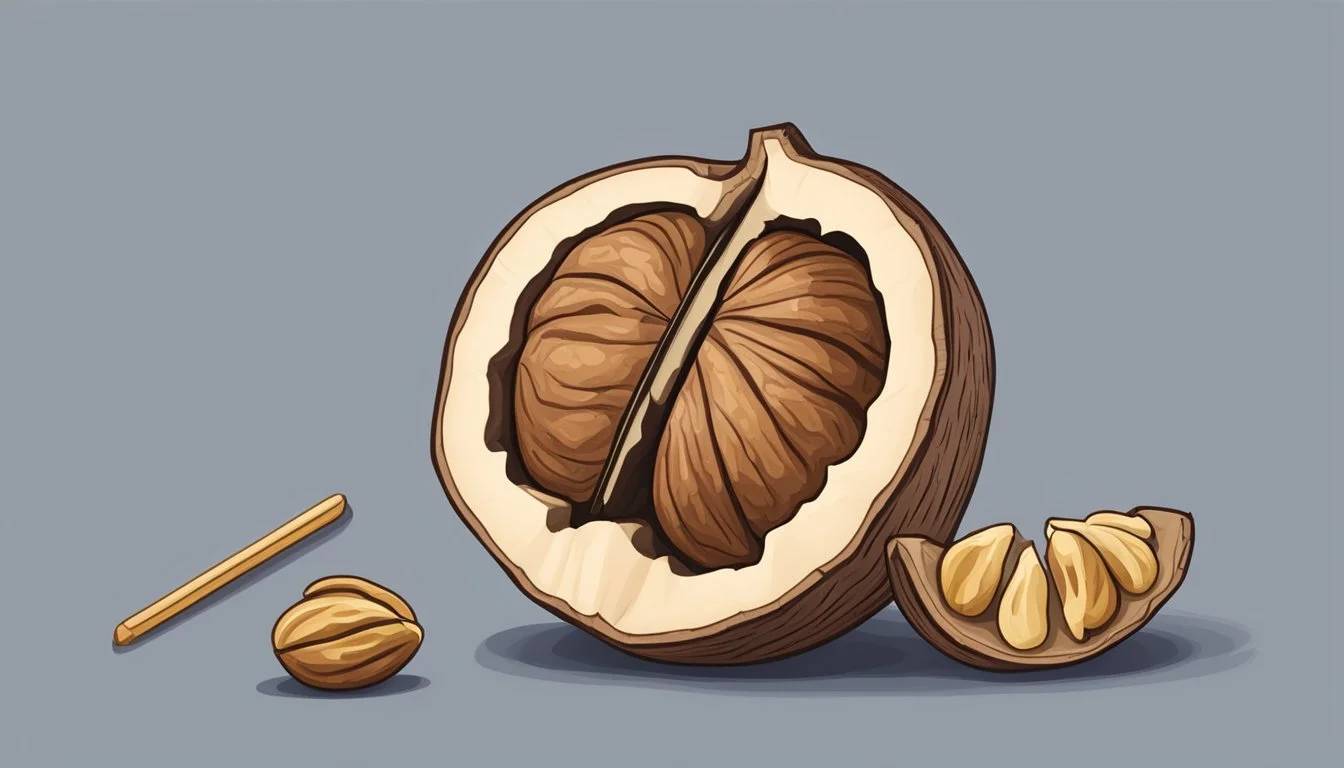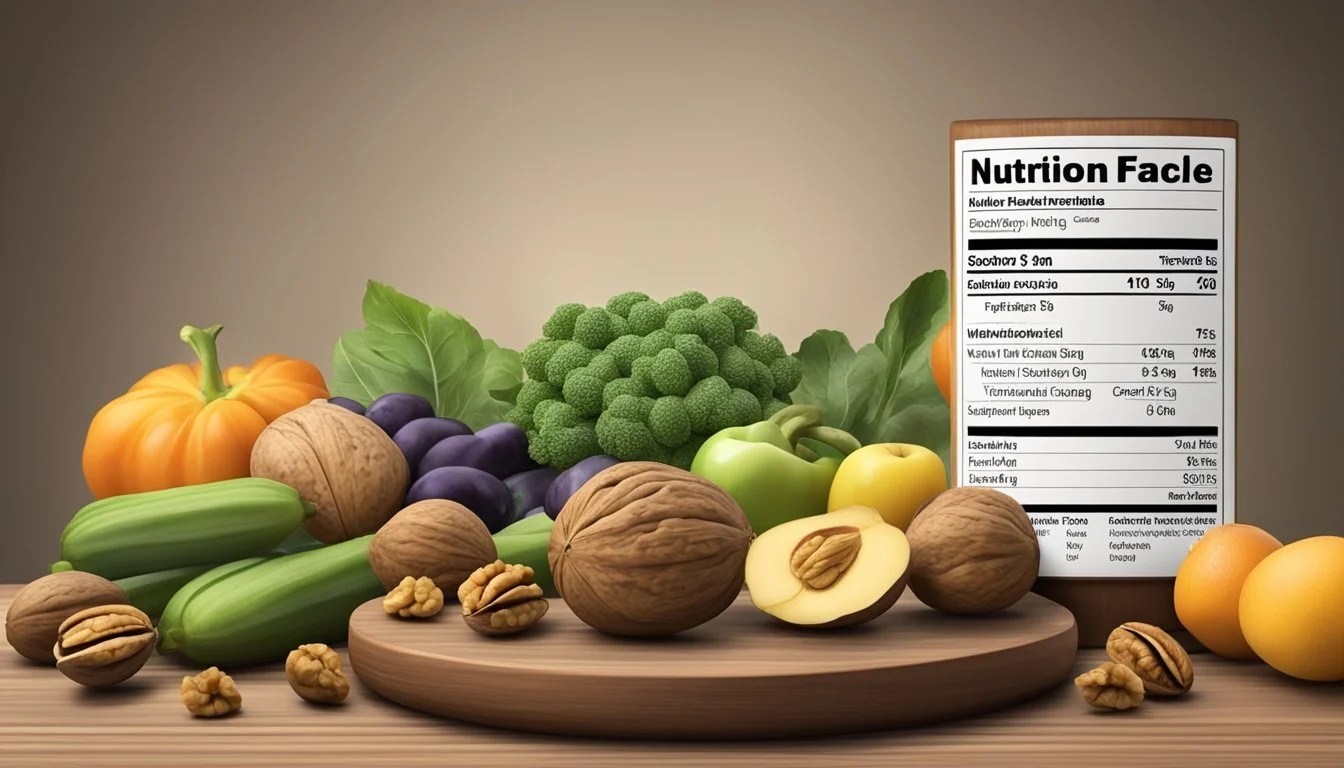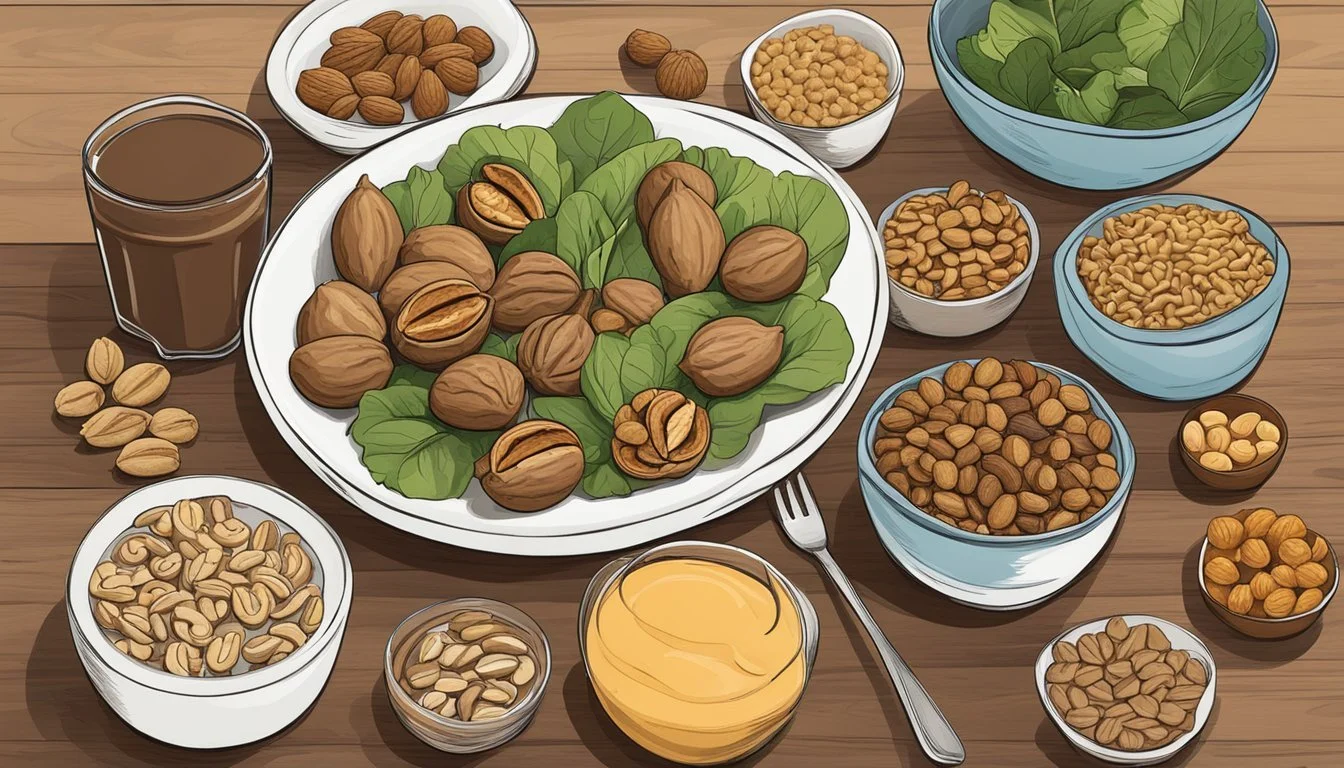How do You Eat a Walnut?
Unveiling the Simple Steps
Eating a walnut is a simple and enjoyable process that begins with cracking the shell to reveal the nut inside. This versatile food can be eaten raw, roasted, or added to various dishes for added flavor and texture. Walnuts are not just a tasty snack but also a source of valuable nutrients, making them a staple in health-conscious diets.
Walnuts are recognized for their health benefits, which are attributed to their high content of omega-3 fatty acids, protein, and fiber. Regular consumption of walnuts can contribute to improved cardiovascular health and may support better mental well-being. With their unique combination of healthful fats, vitamins, and minerals, walnuts are a smart choice for those looking to enrich their diet.
Selection and Storage
When selecting walnuts, it's crucial to look for signs of freshness and ensure they're stored properly to maintain their quality and extend shelf life.
Choosing Quality Walnuts
Appearance: Look for walnuts that have intact, unbroken shells without any holes or cracks, as these can be signs of insect infestations. Raw walnuts should have a consistent, light brown color without any dark or discolored spots which could indicate mold or spoilage.
Taste test: If possible, sample the walnuts. Quality walnuts have a rich, buttery flavor without any bitterness—bitterness can indicate that the walnuts have turned rancid.
Storage Techniques
Temperature: Store walnuts in a cool, dry place away from direct sunlight. Temperatures under 60 degrees Fahrenheit are ideal to help maintain their quality.
Containers: Place walnuts in airtight containers to preserve their flavor and protect them from odors. For bulk purchases, make sure the storage containers are sealed properly.
Storage Location Shelf Life Notes Pantry 3 months Optimal for short term storage of shelled walnuts Refrigerator 6 months Ideal for raw walnuts to maintain freshness Freezer 1 year or longer Best option for extending shelf life
Note: Frequent exposure to air and humidity can spoil walnuts quickly, reducing their shelf life and quality. Always reseal bags or containers tightly after use.
Preparation Methods
Proper preparation of walnuts can enhance their flavor and make them easier to consume, whether they are enjoyed raw, roasted, or sprouted. Below are specific methods to prepare walnuts for consumption.
Cracking Walnuts Open
To eat a walnut, one must first crack the hard outer shell. One secure method is to use a dedicated nutcracker, positioning the walnut in the device and applying pressure until the shell cracks and you can extract the kernel. For stubborn shells, one can also use a hammer or a heavy object, placing the walnut on a hard surface and gently tapping it until it cracks open.
Roasting Walnuts
Roasting walnuts intensifies their flavor and adds a delightful crunch. Preheat the oven to 350°F (175°C) and spread shelled walnuts in a single layer on a baking sheet. Toast them for approximately 10 minutes, checking frequently to prevent burning. Alternately, walnuts can be toasted in a skillet over medium heat for 2-5 minutes, stirring often for an even roast.
Soaking and Sprouting
Soaking and sprouting walnuts can improve digestibility and increase nutrient availability. To soak, simply submerge raw walnuts in water for 4-8 hours. After soaking, to sprout walnuts, one must rinse them and allow them to sit at room temperature for a day or two until a small sprout develops. This process can be beneficial for those especially sensitive to nuts.
Nutritional Profile
Walnuts are nutrient-dense foods, high in protein and essential fatty acids, while offering a beneficial mix of vitamins and minerals. They are particularly noted for their high content of omega-3 fatty acids and antioxidants which contribute to various health benefits.
Macro and Micronutrients
Walnuts contain macronutrients essential for energy and body function. One ounce (about 28 grams or 14 halves) of walnuts typically provides:
Calories: Approx. 185
Protein: 4.3 grams
Fat: 18.5 grams (mainly unsaturated fats)
Saturated fats: 1.7 grams
Monounsaturated fats: 2.5 grams
Polyunsaturated fats: 13.4 grams
Omega-3 fatty acids: 2.5 grams
Carbohydrates: 3.9 grams
Fiber: 1.9 grams
Sugar: 0.7 grams
Walnuts are rich in polyunsaturated fatty acids, particularly alpha-linolenic acid, a type of plant-based omega-3 fatty acid.
Vitamins and Minerals
Walnuts are an excellent source of several vital vitamins and minerals, noteworthy for their rich content of:
Manganese: Provides about 45% of the Daily Value (DV)
Copper: Offers nearly 50% of the DV
Magnesium: Contains around 11% of the DV
Phosphorus: Delivers about 10% of the DV
Other minerals present in smaller amounts include iron, calcium, zinc, potassium, and selenium. Walnuts also supply valuable vitamins such as:
Folate: Required for DNA synthesis and repair
Vitamin E: A powerful antioxidant
Vitamin B6: Important for brain health
Thiamin (Vitamin B1): Essential for energy metabolism
With antioxidants like polyphenols also playing a role, walnuts' nutritional profile supports overall health and well-being.
Health Benefits
Eating walnuts contributes to a variety of health benefits due to their rich content of omega-3 fatty acids, antioxidants, and polyunsaturated fats. These components are essential for maintaining heart health, supporting brain function, reducing inflammation, and more. The following sections highlight the specific health advantages of consuming walnuts.
Heart Health
Walnuts are heart-healthy due to their high levels of alpha-linolenic acid (ALA), a type of plant-based omega-3 fatty acid. Regular consumption can improve cholesterol levels, particularly by lowering LDL (bad) cholesterol. This contributes to reduced risk of cardiovascular diseases.
Brain Function and Mental Health
The omega-3 fatty acids in walnuts are beneficial for brain function, potentially aiding in memory improvement. They also contain compounds that may alleviate symptoms of depression, thus supporting not only cognitive health but also mental well-being.
Anti-Inflammatory and Antioxidant Effects
Walnuts have considerable anti-inflammatory properties, largely due to their antioxidant content. They combat oxidative stress and may protect cells from damage caused by free radicals. This antioxidant action can also play a role in reducing the risk of cancer.
Weight Management and Diabetes Control
Including walnuts in a healthy diet may assist with weight management and blood sugar control, thus offering benefits for individuals with diabetes, particularly type 2 diabetes. Their healthy fats can contribute to satiety and have a lesser impact on blood sugar levels, compared to foods high in saturated fats.
Gut Health and Digestion
Walnuts favor gut health by potentially acting as prebiotics—non-digestible food ingredients that promote the growth of beneficial gut bacteria. This enhancement of gut flora can lead to better digestion and overall gut health, and may also improve the absorption of nutrients.
Culinary Uses
Walnuts are a versatile ingredient known for their distinctive flavor and nutritional benefits, largely used in snacks, entrees, and desserts. They provide a pleasing crunch and are often highlighted in recipes for their rich texture and healthful properties.
Snack Ideas
Trail Mix: For a nutritious snack, one can mix walnuts with dried fruits (What wine goes well with dried fruits?) and seeds to create a homemade trail mix.
Yogurt Topping: Adding chopped walnuts to yogurt enriches its nutritional value and adds texture.
Oatmeal: Stirring walnuts into oatmeal not only improves its taste but also its nutrient content, infusing it with healthy fats.
Cooking with Walnuts
Salads: Toss toasted walnuts into salads to add a satisfying crunch and boost of nutrition.
Chili: Crushed walnuts can be used as a meat substitute or additional texture in chili recipes.
Breadcrumbs: Blended walnuts can serve as a gluten-free alternative to breadcrumbs in various dishes.
Walnuts in Baking
Bread: Walnuts can be incorporated into bread dough, imparting a nutty flavor and hearty texture.
Muffins: Chopped walnuts are a common additive in muffin recipes, providing a contrast to the soft crumb.
Desserts: Whether in cakes or cookies, walnuts enhance the dessert experience with their robust flavor profile.
Creating Sauces and Dressings
Salad Dressings: Walnut oil, with its rich and nutty essence, is an excellent base for vinaigrettes and dressings.
Pesto: Substituting traditional pine nuts with walnuts in pesto recipes offers a unique twist and deeper flavor.
Sauces: Finely chopped or ground walnuts can thicken and enrich the texture and taste of sauces, especially in plant-based cooking.
Safety and Allergy Considerations
When consuming walnuts, it's essential to consider potential allergies. Walnuts are a common allergen and part of the tree nut family. A person with a tree nut allergy might experience severe reactions upon ingesting walnuts or products containing walnut ingredients.
Symptoms of Walnut Allergy
If one has a walnut allergy, symptoms may vary from mild to life-threatening and can include:
Gastrointestinal issues: Nausea, vomiting, diarrhea, and abdominal pain.
Skin reactions: Hives, itching, and eczema.
Respiratory problems: Sneezing, coughing, and difficulty breathing.
Risk Management for Individuals with Nut Allergies
Individuals allergic to walnuts, or any tree nuts, should be vigilant about their food choices:
Read labels carefully to identify walnut ingredients in packaged foods.
Avoid cross-contamination by using separate utensils and surfaces when preparing walnut-free food.
Be aware that many baked goods, candies, and pesto may contain walnuts.
Walnut oil is a hidden source of allergens and should be avoided.
Cross-Reactivity Considerations
Approximately 30% of individuals with a tree nut allergy are allergic to multiple nuts. Additionally, around 20 to 30 percent of those allergic to peanuts, which are legumes, may also react to tree nuts like walnuts.
Those with known allergies should consult healthcare professionals for personalized advice on nut consumption and carry an epinephrine auto-injector in case of accidental exposure.
Comparative Analysis
In evaluating walnuts in relation to other nuts, one finds that each variety of nut has specific nutritional profiles and benefits. A deeper understanding emerges upon examining these differences.
Walnuts Versus Other Nuts
Walnuts stand out among tree nuts for their significantly higher omega-3 fatty acid content. Specifically, one ounce of walnuts contains over 2,500 mg of omega-3 fatty acids, which is profoundly more than what is found in a comparable serving of almonds—merely 1.7 mg. These essential fats are known for their anti-inflammatory properties and various health benefits.
Omega-3 Fatty Acids:
Walnuts: >2,500 mg per 1 oz
Almonds: 1.7 mg per 1 oz
Notably, almonds do carry their own merits, such as higher levels of vitamin E, which is important for skin health and has antioxidant properties. Yet, when it comes to mineral content such as magnesium and iron, walnuts provide roughly 10-14% of the daily requirement, which is a significant contribution for only a single ounce.
Vitamin E:
Walnuts: Moderate
Almonds: High
Minerals (Iron, Magnesium):
Walnuts: 10-14% DV per 1 oz
Almonds: Lesser in comparison
Other tree nuts like hazelnuts also offer nutrient-dense profiles, yet walnuts are distinctive for their combination of fats, minerals, and other nutrients. Regular consumption of nuts, including walnuts, is associated with a reduced risk of heart disease.
Walnuts are differentiated further in terms of caloric bioavailability. Research indicates that not all of the calories in walnuts are fully absorbed by the body, suggesting that they might be a smarter choice when considering weight management.
In terms of dietary fiber, protein, and healthy fats, walnuts are on par with many other nuts, contributing to their status as a hearty, nutritious snack option. They're recommended over less nutrient-dense snacks, such as potato chips, for those looking to improve dietary choices.
Incorporating Walnuts into Your Diet
Walnuts can be a nutritious addition to one's daily routine, offering benefits for heart health and fitting seamlessly into various dietary patterns.
Daily Recommendations
The exact amount of walnuts one should consume daily can vary depending on individual dietary needs and health goals. However, research suggests that consuming about 1.5 ounces of walnuts per day, which roughly translates to a handful or approximately 1/4 cup, can contribute positively to a healthy diet. This portion can help in reducing the risk of heart disease by improving lipid profiles, as walnuts are rich in Omega-3 fatty acids.
1 ounce of walnuts: About 14 walnut halves
1.5 ounces of walnuts: About 21 walnut halves
Dietary Patterns
When integrating walnuts into a dietary pattern, the Mediterranean diet serves as a prime example of harmonizing walnuts with whole foods focused on plant-based nutrition. This diet is often associated with a lower risk of heart disease, prostate cancer, and Alzheimer's disease.
Breakfast: Add chopped walnuts to oatmeal or yogurt.
Snacks: A small portion of raw walnuts or mixed with dried fruits.
Salads: Toss walnuts into leafy greens or whole grain salads for added texture and nutrients.
Cooking: Crushed walnuts can be used as a crust for fish or poultry.
By incorporating walnuts into one's diet, they can contribute to a more heart-healthy and balanced eating pattern, which is fundamental in managing the risks associated with various chronic diseases. Regular intake as part of a well-rounded diet can offer substantial health benefits.









